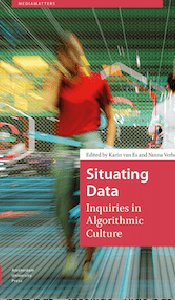In today’s digital age, effective public engagement requires embracing new communication technologies. This guide,written for public sector managers, explores the potential of electronic engagement (e-engagement) to revolutionize citizen participation. It assesses how these technologies can enhance interactions with stakeholders, improve service delivery, and meet evolving public expectations.
Recommended for:
- Public sector managers and policymakers seeking to expand their public engagement strategies.
- Program practitioners and government officials interested in leveraging technology for better citizen engagement.
- Anyone concerned with fostering a more informed and participatory democracy in the digital era.
You will:
- Gain insights into the transformative impact of advanced communication technologies on public engagement.
- Explore various e-engagement approaches and their potential applications for interacting with stakeholders.
- Learn how to design and implement effective e-engagement strategies tailored to specific needs.
- Understand the key steps for successful implementation, from planning to conclusion.
- Discover valuable resources for further exploration of e-engagement tools and best practices.
Detailed Overview
This practical guide addresses the growing need for public sector institutions to adapt their engagement strategies to the digital landscape. Recognizing how technology has redefined communication and citizen expectations, the book emphasizes the value of e-engagement in enhancing public participation.
Written with public sector managers in mind, the guide avoids technical jargon. Instead, it focuses on the strategic application of technology to improve public engagement. Key benefits of utilizing e-engagement tools include:
- Reaching a wider and more diverse audience.
- Enabling real-time interaction and feedback.
- Enhancing transparency and accountability in decision-making processes.
- Fostering collaboration and innovation through online platforms.
- Streamlining communication and information sharing.
Structured for easy navigation, the guide delves into various aspects of e-engagement:
- Introduction: The book sets the stage by exploring the concept of democracy in the digital age. It highlights the challenges and opportunities presented by technology in fostering informed citizen participation.
- Definitions and Approaches: This section clarifies key terms related to e-engagement and distinguishes it from traditional engagement methods. Additionally, it explores various e-engagement approaches, such as online surveys, information portals, and social media platforms.
- Designing the Right Approach: A crucial aspect of successful e-engagement is tailoring the strategy to specific goals and target audiences. This section outlines a framework for designing effective e-engagement plans,considering factors like stakeholder needs, desired outcomes, and available resources.
- Implementation: Putting the plan into action is crucial. This section discusses the practical steps involved in implementing an e-engagement strategy, including selecting appropriate technologies, managing logistics, and ensuring accessibility for all participants.
- Concluding the Process: Evaluation and follow-up are essential for ensuring the effectiveness of an e-engagement initiative. This section provides guidance on concluding the process, assessing its impact, and incorporating learnings into future strategies.
Additional Resources:
The guide offers valuable resources to further explore the world of e-engagement. This includes a comprehensive “Further Reading” list and two appendices:
- Appendix A: The Policy Cycle Engagement Model – This appendix provides a framework for integrating e-engagement tools into different stages of the policymaking process.
- Appendix B: Catalogue of eEngagement Models – This extensive appendix offers a catalog of various e-engagement models, categorized by purpose and functionality.
Overall, Electronic engagement: A Guide for Public Sector Managers serves as a valuable resource for public officials seeking to leverage technology for more effective and inclusive public engagement in the digital era.
Citation and Licensing
Peter Chen. ANU Press. (2007). Electronic Engagement: A Guide for Public Sector Managers. This ebook is published by ANU Press and is publicly available on their website: https://press.anu.edu.au/publications/series/anzsog/electronic-engagement
Providing a hyperlink to the original source is generally considered legal, as:
- The content is already published and publicly accessible on the original website.
- This page is not reproducing or republishing the full content but only providing a link to the original source.
- This page is not modifying or altering the content in any way.







